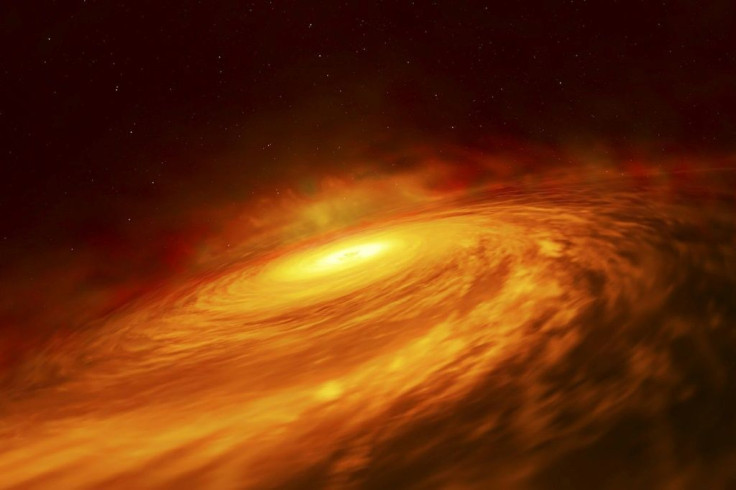Astronomers Spot Most Massive Black Hole Merger Observed To Date

KEY POINTS
- Scientists report the detection of the most massive and distant black hole merger
- One of the black holes in the merger is so massive scientists say it shouldn't exist
- The black hole that resulted from the merger could be the first evidence of elusive intermediate black holes
Scientists observed a merger between two black holes that is unique in several ways. It is said to be the most massive and distant black hole merger observed by gravitational wave detectors to date, and could be the first evidence of a third type of black hole.
On May 21, 2019, during the Laser Interferometer Gravitational-Wave Observatory (LIGO) and Virgo collaboration's third observing run, scientists detected quick gravitational waves from a merger between two black holes when the universe was just half its current age.
Dubbed GW190521, the merger is quite unique for various reasons. For one thing, a black hole in the merger was one and a half times more massive than the other one, which was deemed to be an ordinary-sized black hole. The bigger black hole is so massive -- 85 times the mass of the sun -- that scientists say it shouldn't even exist based on the current understanding of stellar explosions.
"The mass of the larger black hole in the pair puts it into the range where it's unexpected from regular astrophysics processes," principal investigator Peter Shawhan of the University of Maryland said in a news release from the university. "It seems too massive to have been formed from a collapsed star, which is where black holes generally come from."
Because of its size, the researchers believe it may have been a result of another earlier merger between two black holes. This type of hierarchical merger has been hypothesized before but GW190521 may be the first actual evidence of it.
What is more interesting about the merger is that even though the signal was so quick at just a tenth of a second long, the event resulted in a 142-solar mass black hole, the most massive merger to be observed by the gravitational wave detectors.
At this mass, this means that the merger resulted in what's known as an intermediate black hole, the third type of black hole whose mass lies between stellar black holes and supermassive black holes. With stellar black holes ranging from three to 10 solar masses and supermassive black holes in the millions to billions of solar masses, intermediate black holes are in the middle, with masses ranging from 100 to thousands of solar masses.
At 142 solar masses, the black hole that resulted from GW190521 fits squarely within the range of intermediate black holes, which have only been theorized but not conclusively observed.
This makes GW190521 the biggest black hole merger to be observed by gravitational wave detectors and possibly the first direct observation of the birth of an intermediate black hole.
"We don't know yet whether GW190521, this surprising discovery and first observation of an intermediate mass black hole, is an entirely new class of binary black holes or just the high-mass end of the source spectrum we've seen so far," co-author of one of the studies about GW190521 and director at Max Planck Institute for Gravitational Physics (Albert Einstein Institute), Karsten Danzmann, said in a news release from the institute. "Soon, when we have analyzed all binary black hole mergers seen by LIGO and Virgo in their third observing run we might know more."
Two papers on GW190521 were published Sept. 2, the first one being in Physical Review Letters and the other in Astrophysical Journal Letters.
© Copyright IBTimes 2025. All rights reserved.






















